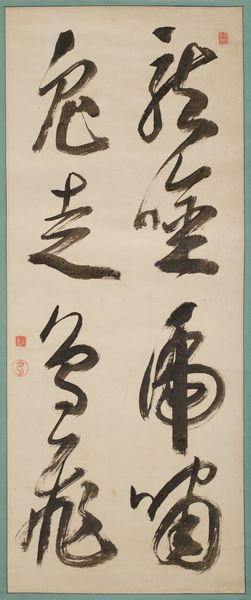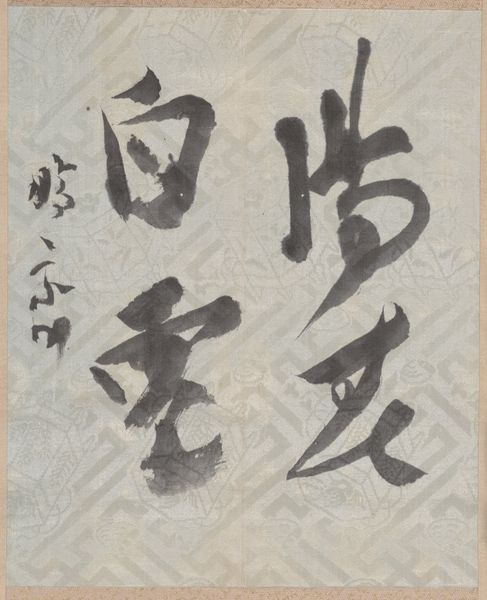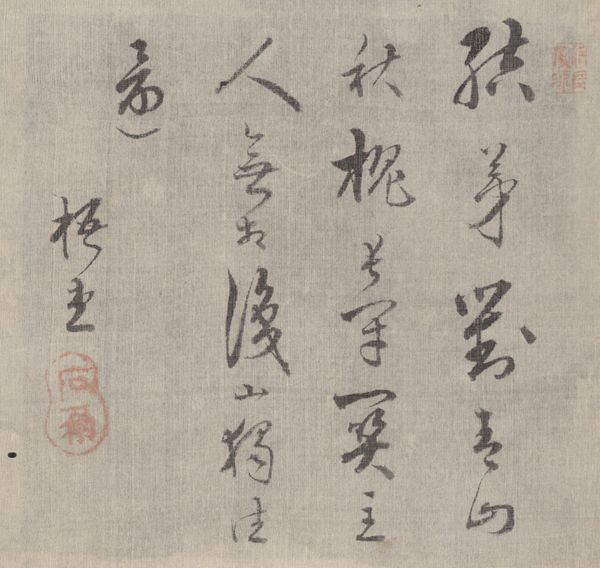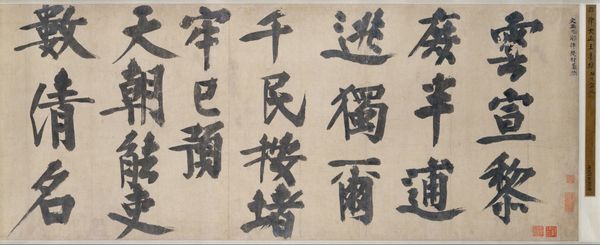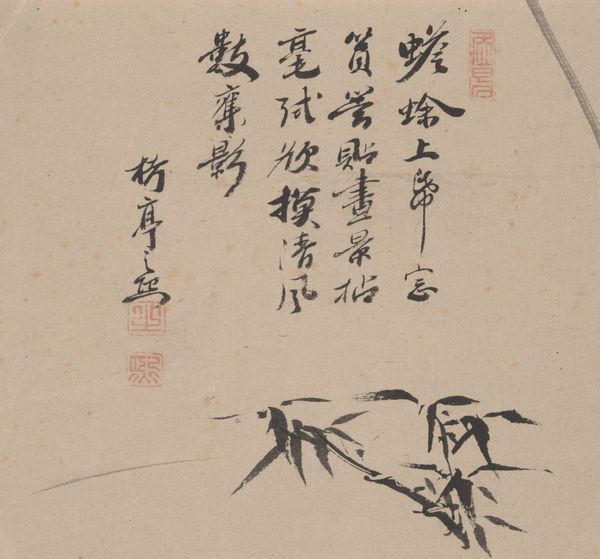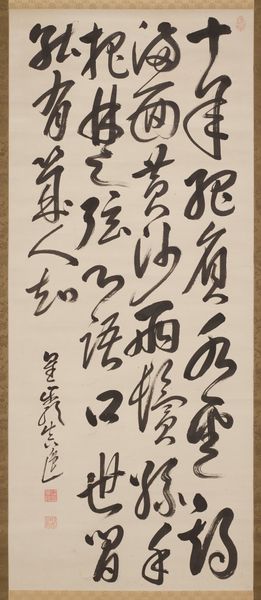
paper, ink
#
asian-art
#
paper
#
ink
#
orientalism
#
calligraphic
#
calligraphy
Dimensions: 53 13/16 × 21 5/8 in. (136.68 × 54.93 cm) (image)80 1/16 × 25 5/16 in. (203.36 × 64.29 cm) (mount, without roller)
Copyright: Public Domain
Ryū Kōbi created "Clouds and Dew" with ink on paper sometime in the 18th century. This artwork is an exquisite example of Japanese calligraphy, where the characters themselves become art. The writing speaks of clouds, dew, and other ephemeral atmospheric phenomena. Such elements are core to the Japanese aesthetic, representing the transient nature of life. The motif of clouds, for example, is not merely meteorological; it is a symbol of transformation and the shifting, dreamlike quality of existence. Consider the swirling clouds in ancient Chinese bronzes, or the billowing robes of Buddhist deities in countless paintings across Asia. Here, the cloud motif resurfaces, reinterpreted through the artist's brush. It echoes through time, a potent reminder of the intangible forces that shape our world, engaging our senses with the sublime. The image evokes a deeply ingrained sense of the cyclical nature of life. It illustrates how the ephemeral and the eternal are intertwined, constantly evolving and reforming in the collective consciousness.
Comments
minneapolisinstituteofart about 2 years ago
⋮
“Yellow clouds become snow White dew changes to frost”雲黄化雪 露白為霜 Ryū Kōbi, also known as Tatsu Sōro or Tatsu Kimiyoshi, was a pupil of Ogyū Sorai (1666–1728), a poet and one of the most influential Confucian scholars of the Edo period. For 18 years from 1756, Kōbi held the post of scholar for the Hikone domain. With each line bookended by a character containing the radical for “rain” 雨, this enigmatic couplet has a pleasing symmetry. By making the character shiro 白 (“white”) smaller than the others, Kōbi introduces an element of variation that prevents composition of the poem from being rigid. The rhythmic thickening and thinning of the strokes, and the sticky texture of the ink, in which fine air bubbles remain trapped, provide another layer of interest.
Join the conversation
Join millions of artists and users on Artera today and experience the ultimate creative platform.


